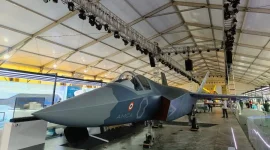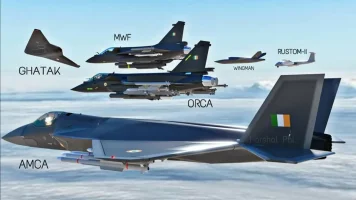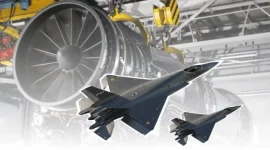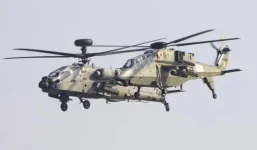- Views: 7K
- Replies: 77
Leading Indian engineering and defence conglomerate Larsen & Toubro (L&T) has outlined a significant proposal for the domestic development of a powerful 110 kilonewton (kN) thrust jet engine.
Jayant Damodar Patil, the head of L&T's aerospace and defence division, stated that L&T, potentially in collaboration with other private Indian firms, has the capability to create this engine, crucial for powering India's future fighter aircraft like the Tejas Mk2 and the Advanced Medium Combat Aircraft (AMCA).
Mr. Patil emphasised that success hinges on the government adopting a procurement strategy that values technical capability and innovation above simply selecting the lowest bidder – a practice often referred to as the "L1 syndrome".
He suggested that lessons learned from the earlier Kaveri engine project could provide a valuable foundation for this new initiative.
The Kaveri engine, initiated in the 1980s by the Defence Research and Development Organisation's (DRDO) Gas Turbine Research Establishment (GTRE), aimed to power the indigenous Tejas Light Combat Aircraft (LCA). However, after significant investment (estimated over ₹2,000 crore, or about $240 million) and decades of work, the project faced setbacks.
It achieved only 75-80kN of thrust, falling short of the 90kN needed for the Tejas Mk1, and encountered issues with afterburners and weight. Consequently, India chose General Electric's F404 engines for the Tejas Mk1 fleet.
Despite these challenges, Mr. Patil believes the Kaveri program built essential expertise in areas like metallurgy and compressor design. "The Kaveri has provided a base to develop a new engine entirely in the country," he remarked.
The proposed 110kN engine is specifically targeted for the upcoming Tejas Mk2, a more advanced version of the LCA, and the ambitious twin-engine AMCA stealth fighter program, both central to the Indian Air Force's future fleet structure.
Developing such an engine requires mastering advanced technologies like single-crystal turbine blades and sophisticated afterburners. India has gained some experience in these fields through the development of the Kaveri's non-afterburning ('dry') variant, which is now slated to power unmanned systems like the Ghatak UCAV (Unmanned Combat Aerial Vehicle).
To overcome the hurdles faced by the state-run GTRE working largely in isolation on the Kaveri, Mr. Patil advocates for a consortium model. This could involve major private players like Mahindra Aerospace, Tata Advanced Systems, and Godrej Aerospace pooling their respective expertise and resources.
He stressed that government backing focused on merit, rather than just the lowest cost, is essential to attract private sector talent and investment for such a complex undertaking. "If the government backs merit over L1... a pool of talent can be brought together," Patil stated, suggesting this approach could foster faster innovation compared to the previous state-led model.
However significant challenges remain. Industry experts estimate that developing a new 110kN engine could require investments between ₹15,000 to ₹20,000 crore ($1.8 to $2.4 billion) over a 10-15 year period. Furthermore, India needs to advance its capabilities in critical 'hot section' engine technologies and address a potential shortage of specialised engineers.
While a consortium could mitigate some risks, sustained government commitment and potentially strategic foreign partnerships for specific technologies – recalling past discussions like the potential Kaveri-Safran collaboration – might still be necessary.
The Indian government's response to L&T's specific proposal is awaited. However, the initiative aligns well with the national 'Atmanirbhar Bharat' (Self-Reliant India) policy, which strongly emphasizes indigenous manufacturing, particularly in the defence sector. The DRDO itself is reportedly pursuing advanced aero-engine development, indicating governmental focus in this area.
If supported, L&T believes its proposal, leveraging its existing facilities and experience, could potentially lead to an engine prototype around 2035, fitting the timeline for the AMCA program and marking a major step towards self-sufficiency in critical defence technology.




